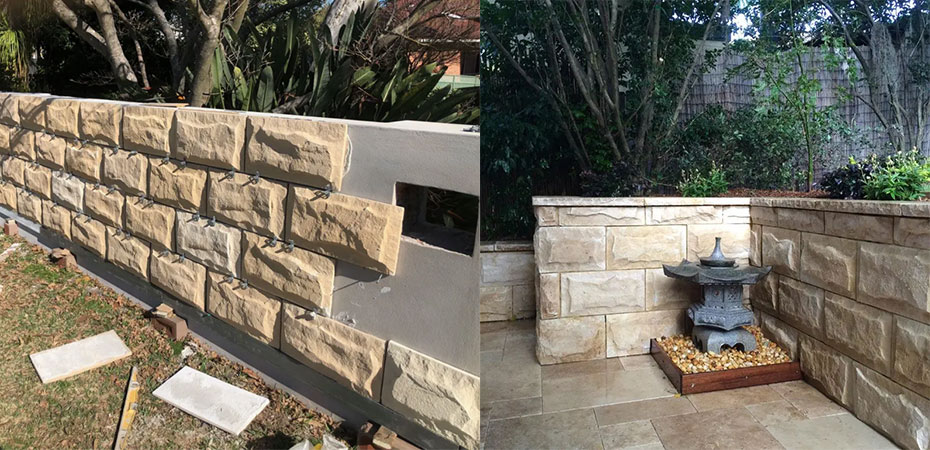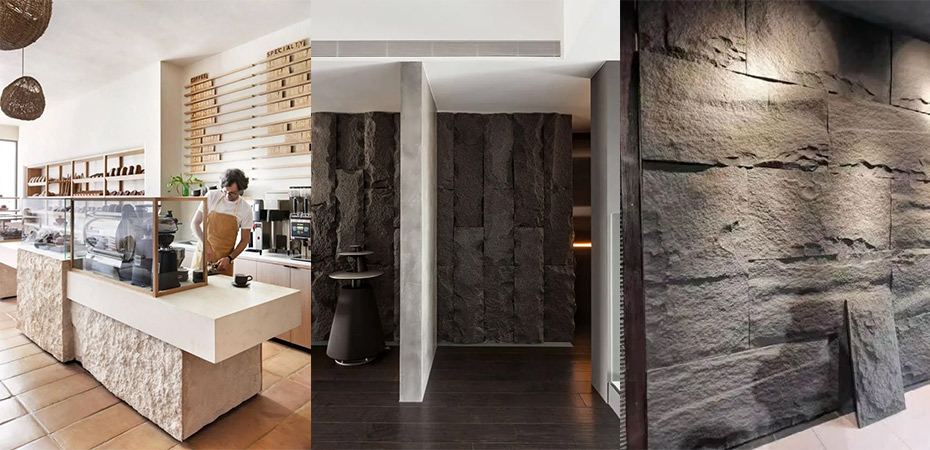What Are You Looking For?
Do you know the characteristics and construction process of mushroom stone?
Aug 26, 2024Mushroom stone is a product of natural stone processing, named after its protruding decorative surface resembling a mushroom. Even before the rise of modern stone industry, mushroom stone could be handcrafted and used more widely than in modern times. The mushroom stones handcrafted by craftsmen were widely used in residential buildings, gardens, temples, palaces, and landscape architecture during the Ming and Qing dynasties, presenting effects comparable to modern mechanical processing. In modern times, mushroom stones are mainly used for the decoration of indoor and outdoor walls, columns, and other facades, appearing antique, thick, and stable. The shape of mushroom stones is not naturally formed, but artificially processed.
Raw material
The processing of mushroom stone generally uses natural stone, and common types of stone include slate and granite.
Slate mushroom stone
Natural cultural stones, slate, mushroom stones, granite, marble are suitable for interior and exterior wall decoration of buildings, staircase, floors, etc. They come in a variety of colors and are natural and pollution-free, making them ideal building decoration materials. Mushroom finished slate is carved out of the edges of thick slate using tools. Due to the thin and fragile nature of slate, most mushroom finished slate is hammered out by hand tools. Therefore, each piece of mushroom finished slate is unique and more decorative, making it popular among people.
Granite mushroom stone
The processing of granite mushroom stone involves first sawing the blocks out of the flat surface with a diamond circular saw blade, and then chiseling the mushroom surface with tools. There are also methods of chiseling out mushroom finished stones on both sides, and then cutting them in the middle with a diamond saw blade to obtain two mushroom stones at the same time. The hardness and wear resistance of granite material make granite mushroom stone more widely used in outdoor decoration.
Characteristics of mushroom stone
1. Natural environmental protection
Mushroom stone is made from natural materials and is very environmentally friendly. It does not cause pollution to the environment and has a small amount of low radiation, which is harmless to the human body.
2. Highly decorative
The shape of mushroom stone is unique, with a strong sense of hierarchy and three dimensionality, making it a high-end decoration for villas and high-end buildings. Natural stone used for garden decoration can also create a natural and natural environment.
3. Waterproof and anti fouling
Mushroom stone has strong waterproof and anti fouling properties, so there is no need to worry about cleaning when used for outdoor decoration.
4. Wear resistant and durable
Mushroom stones have a very hard texture and are generally difficult to crack or wear. Even in outdoor use, it is not afraid of wind and rain, and can still ensure a relatively long service life, which is very durable.

Mushroom stone construction process
Before laying mushroom stones, some substrate treatment needs to be done on the exterior wall, including squaring, reinforcing, dividing, mortar, and measuring. At the same time, after making the sample blocks, passing the appraisal and determining the construction method, the mushroom stone wall can be officially started.
1. Dealing with substratum
Before construction, clean the impurities on the surface of the wall base to ensure that the wall surface is basically flat.
2. Apply leveling layer
The leveling layer is made of 1:3 cement mortar.
3. Brick arrangement, grid division, and line marking
The width of the brick joint is generally 8mm, and whole bricks must be used for dividing and arranging the bricks. If it is not possible to use the whole brick, the mortar joint should be adjusted. If it cannot be adjusted, the whole brick should be cut again.
4. Paste mushroom stones
The tiling should be done from bottom to top, with a bonding thickness between 4 and 8mm.
5. Jointing
According to the design requirements, the material and depth should be pointed horizontally and then vertically to ensure a continuous, straight, smooth, crack free, and not hollow effect.
6. Clean the surface
When the surface is dry and the cement slurry is about to dry, wipe the entire mushroom stone with dry cotton yarn, and then rinse it clean with clean water.
Application cases
